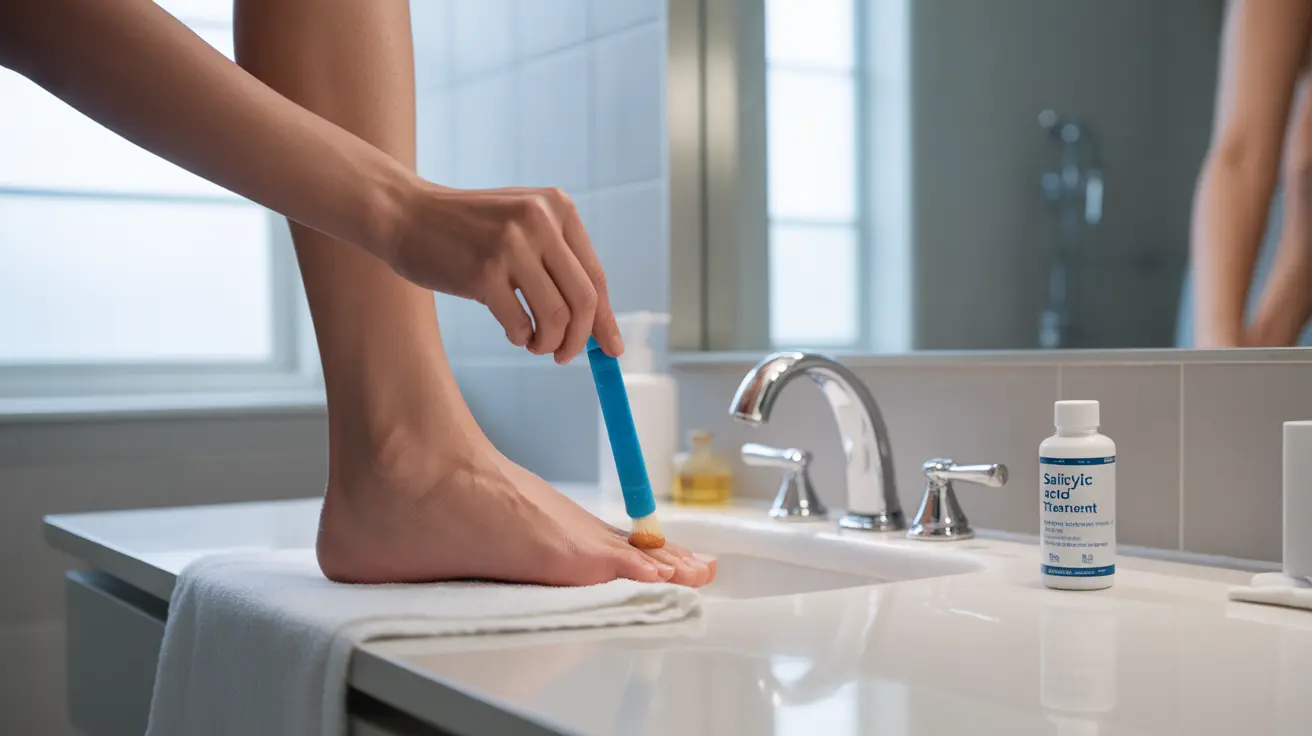Dealing with warts can be frustrating, but salicylic acid has emerged as a widely trusted over-the-counter treatment option. This powerful ingredient works through a specific mechanism to gradually eliminate warts while being generally safe for home use. Understanding how salicylic acid works on warts can help you use it more effectively and set realistic expectations for treatment.
In this comprehensive guide, we'll explore the science behind salicylic acid's wart-fighting properties, proper application techniques, and what you should know about its safety and effectiveness compared to other treatment options.
The Science Behind Salicylic Acid's Wart-Fighting Properties
Salicylic acid works through a dual mechanism to combat warts. First, it acts as a keratolytic agent, breaking down the thick, hardened skin cells that make up the wart. Second, it helps stimulate the body's immune response to fight the underlying viral infection causing the wart.
The process gradually removes layers of infected tissue while encouraging healthy skin growth underneath. This systematic approach helps ensure the wart is removed from its root rather than just treating surface symptoms.
Proper Application Methods for Maximum Effectiveness
Success with salicylic acid treatment largely depends on correct application techniques:
- Soak the affected area in warm water for 5-10 minutes
- Gently file down the wart surface with an emery board
- Dry the area completely
- Apply salicylic acid precisely to the wart, avoiding surrounding skin
- Cover with a bandage if recommended by the product instructions
Consistency is key - most treatments require daily application for optimal results. It's important to follow the specific instructions provided with your chosen product, as concentrations can vary.
Treatment Timeline and Expectations
While salicylic acid is effective, it requires patience. Most people see results within 4-12 weeks of consistent treatment. Factors affecting treatment duration include:
- Size and depth of the wart
- Location on the body
- How long the wart has been present
- Individual immune system response
- Consistency of treatment application
Safety Considerations and Precautions
While generally safe, certain precautions should be taken when using salicylic acid:
- Protect surrounding healthy skin with petroleum jelly
- Avoid use on moles, birthmarks, or unusual skin growths
- Stop treatment if severe irritation occurs
- Consult a healthcare provider if you have diabetes or poor circulation
- Keep the product away from eyes and mucous membranes
Frequently Asked Questions
How does salicylic acid remove warts and how long does it take to work?
Salicylic acid removes warts by breaking down the infected skin cells and stimulating the immune response. Most people see results within 4-12 weeks of consistent daily treatment, though some warts may resolve sooner or take longer depending on their size and location.
What is the best way to apply salicylic acid for wart treatment at home?
The most effective application method involves soaking and drying the affected area, gently filing down the wart surface, applying the medication precisely to the wart, and covering it if directed. Consistent daily treatment following product instructions is crucial for success.
Can salicylic acid cause side effects or skin irritation during wart removal?
Some mild irritation is normal, but severe burning, redness, or pain isn't typical. The most common side effects include minor skin irritation and temporary skin discoloration. If severe irritation occurs, discontinue use and consult a healthcare provider.
Is salicylic acid safe for treating warts on feet or for people with diabetes?
While salicylic acid is generally safe for treating foot warts, people with diabetes should consult their healthcare provider before use due to potential healing complications. Those with poor circulation should also seek medical advice first.
How does salicylic acid compare to other wart treatments like cryotherapy?
Salicylic acid typically works more gradually than cryotherapy but can be equally effective over time. While cryotherapy requires office visits, salicylic acid offers the convenience of home treatment at a lower cost. Both methods have similar success rates, though individual results may vary.




